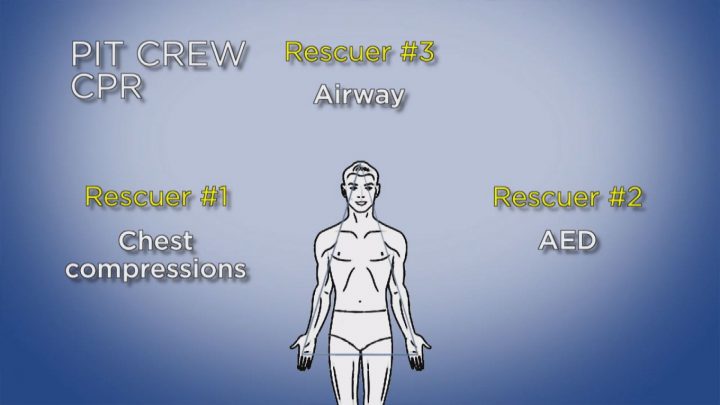Cardiopulmonary resuscitation (CPR) survival rates can vary quite a bit from region to region and even from city to city.

As odd as it sounds, if you were to have a heart attack anywhere in North America – you’d want it to happen here in Saskatoon at a public venue equipped with an AED since our survival rates are some of the best.
“Right now, we have 23 lives saved and right now we rank No. 1 in North America with the amount of lives that we’ve saved and we have over 900 businesses in the city that have AEDs in their buildings,” MD Ambulance spokesperson Troy Davies said.
READ MORE: Saskatoon fire trucks now equipped with fentanyl antidote, naloxone
Two years ago, paramedics added something else to their CPR arsenal – a modern and refined approach known as “pit crew CPR.”
According to Davies, the main focus now is non-stop chest compressions from the second crews arrive on scene.
“Even when we’re charging the machine,” Davies said.
“The thought process was, OK get away from the chest, let the machine charge, well it takes 30 seconds to charge the machine. Now, we continue on the chest and keep going until it’s time to actually push the button.”
A departure from what’s been traditionally done in the field by first responders who would back up as soon as the charge button began to climb.
“It’s been really effective, you’re focusing just on chest compressions and defibrillations and that’s it.”
READ MORE: Saskatoon a ‘leader’ with AEDs: MD Ambulance
Each individual also has a more defined role while performing this type of CPR so like a pit crew on a race track, they can maneuver around each other flawlessly as they attempt to save the person’s life.
According to Davies, 90 per cent of the time the fire department responds to the same calls as MD.
Firefighters trained along side paramedics in learning this new approach and often crew members hop in the ambulance to assist with calls en route to hospital.
- Freeland set to table 2024 federal budget in the House of Commons
- All a-boot tradition: A look at finance ministers’ budget shoes through the years
- Inflation ticked higher in March. Are Bank of Canada rate cuts still in the cards?
- Food service strike: Air Canada, WestJet refine menus at Toronto Pearson
The pre-hospital care model came out of Arizona where survival rates have tripled.
The number of lives saved in Saskatoon so far is still being studied and final numbers will be provided by the health region.
“We have seen an increase in the amount of people getting pulses and breathing again but we want to know the final numbers – we want to know how many patients are walking out and being with their families,” Davies said.
According to the Heart & Stroke Foundation, eight in every 10 cardiac arrests happen at home and in a situation where time is precious and the more people who know how to perform CPR the better.
“Every minute you don’t have CPR you lose a 10 per cent chance of survival,” Davies said.
“So bystander CPR is huge and having your family members trained can make a difference between life and death.”





Comments